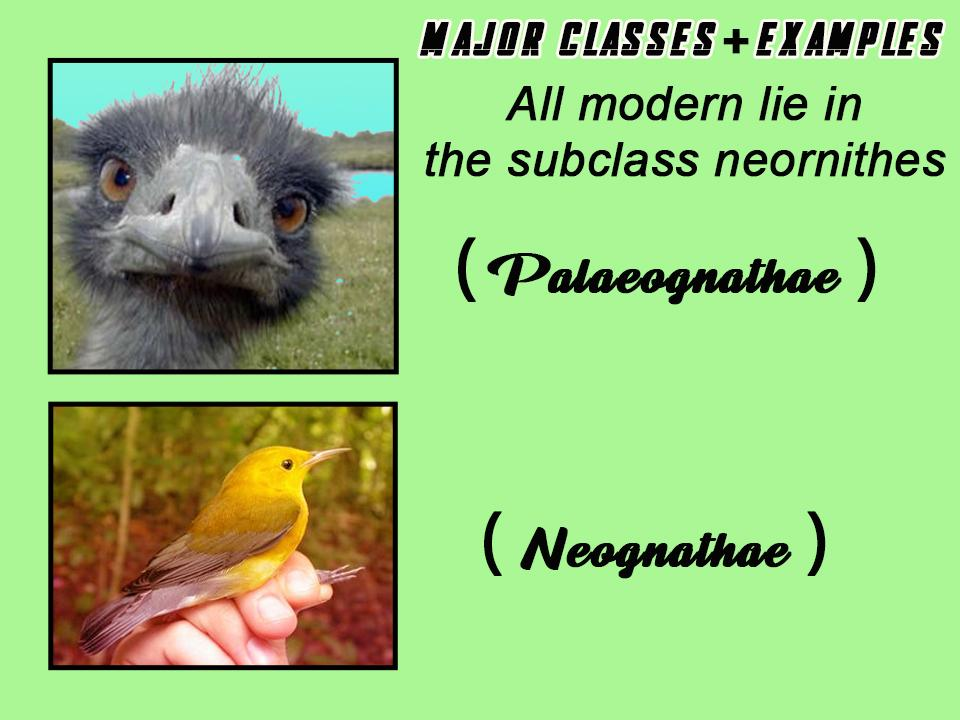
Mention differences between Palaeognathe and Neognathae
Answer
560.7k+ views
Hint: Palaeognathae or paleognaths is one of the two living taxonomic groups of organisms classified on the basis of homologous features and the other being the Neognathae. Five extant branches of flightless lineages come in Palaeognathae known as ratites and one flying lineage, the Neotropic tinamous.
Complete answer:
-The major subdivision within the class Aves, divides the birds into two superorders i.e Palaeognathae and Neognathae.
Differences between Palaeognathe and Neognathae are
Additional Information: -The largest living bird ostrich comes in the Palaeognathae. It can grow up to 9 feet and weigh about 135 kilograms.
-The three species of the kiwi (New Zealand) are also included in the Palaeognathae.
-The birds included in the palaeognathae group on the basis of the distinctive plate morphology.
-Most of the birds are flightless in the sub-order Palaeognathae but some flightless birds like penguins, puffins, and rails are classified in the new Neognathae along with the most flying birds.

Note: -A small number of species come in the palaeognathae including all the ratites and tinamous.
-All the modern birds come in the Neognathae and are classified into two groups i.e Tinamiformes and the Ratitae.
Complete answer:
-The major subdivision within the class Aves, divides the birds into two superorders i.e Palaeognathae and Neognathae.
Differences between Palaeognathe and Neognathae are
| Palaeognathe | Neognathae |
| -It comprises a small number of species and includes ratites and tinamous. | It includes all the other modern birds. |
| -They have a distinctive arrangement of bones in their palates. This type of arrangement is not found in other birds | -The birds in this superorder have different management of bones in the palate which distinguished them from the paleognathous birds |
| -This superorder is subdivided into five orders i.e Tinamiformes, Rheiformes, Struthioniformes, Casuariiformes, and Dinornithiformes. | -This superorder is divided into two Infra classes i.e the Galloanserae and the Neoaves.. |
| -Their distribution is discontinuous except the bird ostrich, they are confined to the Southern continent and Island. | -Their distribution is continental. |
| -They usually adapt to terrestrial habitat. | -They adapt in all the spheres. |
| -The size of the bird is usually large. | -Their size is a variable but usually smaller in size. |
| -They have a function less tell and feathers are devoid of hooks and hooklets. The barbs are free. | -Their tails are functional, help in steering during flight. In the feathers, barbs are united by hooks and hooklets |
Additional Information: -The largest living bird ostrich comes in the Palaeognathae. It can grow up to 9 feet and weigh about 135 kilograms.
-The three species of the kiwi (New Zealand) are also included in the Palaeognathae.
-The birds included in the palaeognathae group on the basis of the distinctive plate morphology.
-Most of the birds are flightless in the sub-order Palaeognathae but some flightless birds like penguins, puffins, and rails are classified in the new Neognathae along with the most flying birds.

Note: -A small number of species come in the palaeognathae including all the ratites and tinamous.
-All the modern birds come in the Neognathae and are classified into two groups i.e Tinamiformes and the Ratitae.
Recently Updated Pages
Master Class 11 Economics: Engaging Questions & Answers for Success

Master Class 11 English: Engaging Questions & Answers for Success

Master Class 11 Social Science: Engaging Questions & Answers for Success

Master Class 11 Biology: Engaging Questions & Answers for Success

Class 11 Question and Answer - Your Ultimate Solutions Guide

Master Class 11 Business Studies: Engaging Questions & Answers for Success

Trending doubts
10 examples of friction in our daily life

One Metric ton is equal to kg A 10000 B 1000 C 100 class 11 physics CBSE

Difference Between Prokaryotic Cells and Eukaryotic Cells

1 Quintal is equal to a 110 kg b 10 kg c 100kg d 1000 class 11 physics CBSE

Explain zero factorial class 11 maths CBSE

What is a periderm How does periderm formation take class 11 biology CBSE




